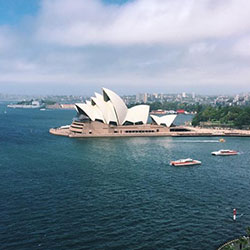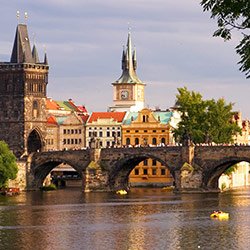Linear Networks Analysis and Synthesis
Engineering & Social Sciences Program
Madrid, Spain
Dates: 1/19/23 - 6/3/23

Linear Networks Analysis and Synthesis
OVERVIEW
CEA CAPA Partner Institution: Universidad Carlos III de Madrid
Location: Madrid, Spain
Primary Subject Area: Mathematics
Instruction in: English
Course Code: 13841
Transcript Source: Partner Institution
Course Details: Level 200
Recommended Semester Credits: 3
Contact Hours: 42
Prerequisites: Linear Algebra (1º)
Systems and Circuits (1º)
Linear Systems (2º)
Ampliación de matemáticas (2º)
Electronic Components and Circuits (2º)
DESCRIPTION
Unit 1: Systematic Linear Network analysis in stationary sinusoidal regimes with mesh and nodal analysis.
1.1. Description of RLC components in SSR.(PO a, PO e, PO g, PO k)
1.2. Using systematic methods for linear network analysis
1.2.1. Mesh analysis
1.2.2. Nodal analysis
1.3. Networks with mutual inductance and transformers
1.4. Real, reactive, and apparent powers. Complex conjugate matching.
Unit 2: Linear Network analysis using the unilateral Laplace transform. (PO a, PO e, PO g, PO k)
2.1. The unilateral Laplace transform
2.2. The generalization of analysis theorems to the Laplace domain. Use in network analysis: free, driven, stationary and transient regimes.
2.3. Transfer functions. Frequency response. Phase and amplitude response.
Unit 3: Two-port network analysis PO a, PO e, PO g, PO k)
3.1. Two-port description: [z], [y] and [F] parameters.
3.2. Two-port interconnection.
3.3. Image parameters.
3.4. Loaded two-ports. Insertion and transmission losses. Matched two-ports. Conjugate matching. Logarithmic measurement units: Nepers and decibels.
Unit 4: An introduction to the synthesis of passive, analog filters. (PO a, PO c, PO e, PO g, PO k)
4.1. Filtering. Phase and group delay. Phase equalization. Filter types. Filter specification.
4.2. Filter characterization functions.
4.3. Low-pass filter approximation theory. Parameter normalization. Frequency transformations.
4.4. Butterworth and Chebychev filter synthesis: low-pass, high-pass, band-pass and suppressed band.
Unit 5: An introduction to the synthesis of digital filters. (PO a, PO c, PO e, PO g, PO k)
5.1. A comparison with analog filters.
5.2. Z domain transfer functions with infinite and finite impulse responses. Difference equations. Direct architectures. Stability.
5.2. FIR filter synthesis from analog synthesis.
5.3. Analog filter simulation with digital filters.
1.1. Description of RLC components in SSR.(PO a, PO e, PO g, PO k)
1.2. Using systematic methods for linear network analysis
1.2.1. Mesh analysis
1.2.2. Nodal analysis
1.3. Networks with mutual inductance and transformers
1.4. Real, reactive, and apparent powers. Complex conjugate matching.
Unit 2: Linear Network analysis using the unilateral Laplace transform. (PO a, PO e, PO g, PO k)
2.1. The unilateral Laplace transform
2.2. The generalization of analysis theorems to the Laplace domain. Use in network analysis: free, driven, stationary and transient regimes.
2.3. Transfer functions. Frequency response. Phase and amplitude response.
Unit 3: Two-port network analysis PO a, PO e, PO g, PO k)
3.1. Two-port description: [z], [y] and [F] parameters.
3.2. Two-port interconnection.
3.3. Image parameters.
3.4. Loaded two-ports. Insertion and transmission losses. Matched two-ports. Conjugate matching. Logarithmic measurement units: Nepers and decibels.
Unit 4: An introduction to the synthesis of passive, analog filters. (PO a, PO c, PO e, PO g, PO k)
4.1. Filtering. Phase and group delay. Phase equalization. Filter types. Filter specification.
4.2. Filter characterization functions.
4.3. Low-pass filter approximation theory. Parameter normalization. Frequency transformations.
4.4. Butterworth and Chebychev filter synthesis: low-pass, high-pass, band-pass and suppressed band.
Unit 5: An introduction to the synthesis of digital filters. (PO a, PO c, PO e, PO g, PO k)
5.1. A comparison with analog filters.
5.2. Z domain transfer functions with infinite and finite impulse responses. Difference equations. Direct architectures. Stability.
5.2. FIR filter synthesis from analog synthesis.
5.3. Analog filter simulation with digital filters.







